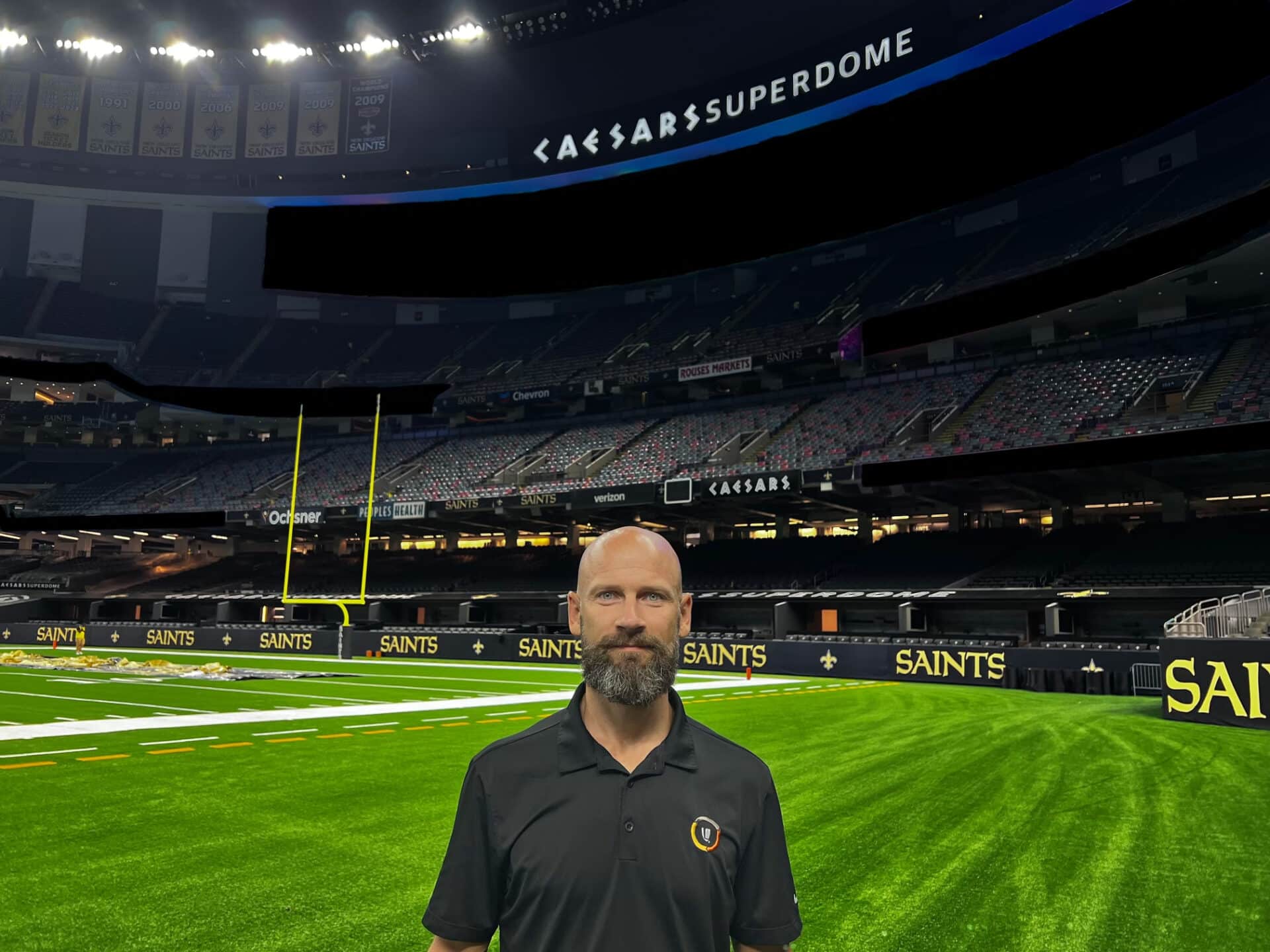
Mark Giles
Vice President, Project Development
Legends
Mark Giles’ role as an owner’s representative has covered 20 arena, stadium and casino developments, including $1.4 billion in construction volume alone over the past three years.
For Giles, a vice president with Legends Project Development, his interest in the details of how buildings come together piqued during his high school internship in architectural drafting in suburban Dallas, Texas.
“We took a lot of trips to Texas Instruments,” Giles said. “It was interesting to see all the people complain about the difference between engineers and architects and how they didn’t understand each other. I thought, ‘Why is that?’”
The journey to finding the answer took Giles down a path toward potentially becoming a military officer after serving in the Corps of Cadets as a student at Texas A&M University, before he decided to study construction science and pursue a career in the building industry.
His work in sports started at PC Sports, a project manager in San Antonio, Texas. Giles met Paula Portz, a principal at PC Sports through Art Waterman, his Corp buddy in College Station who worked at the same firm.
Giles’ first project was KFC Yum! Center in Louisville, Kentucky, a college basketball arena. From there, he transitioned to a renovation project at the St. Pete Times Forum, now Amalie Arena, in Tampa, Florida.
Giles then took a slight detour from the fast-paced world of sports construction, entering the petroleum biz while starting to raise a family. But he was “immediately bored to tears” with his job in oil processing plant construction and jumped back to PC Sports to work on the massive $485 million redevelopment of Kyle Field at his alma mater.
“It was my dream project,” Giles said.
In 2017, Giles followed Portz to Legends after she took a job at the company as chief operating officer.
He’s now juggling multiple projects, including another monster job, the four-year, $450 million renovation of Caesars Superdome in New Orleans, Louisiana. The upgrades cover 1.6 million square feet of a 2 million square foot building that opened in 1975.
Complicating the project is the tricky phasing for construction with less disruptive work taking place during the six-month NFL season at the home of the New Orleans Saints.
In that respect, the lines of communication, the things Giles questioned as a high schooler, are crystal clear.
“There’s no way a project like this happens without everybody’s will asserted on it,” Giles said. “There are so many little things that can derail you. Everybody has taken a stance that we’re going to find a way to get it done.” ”






